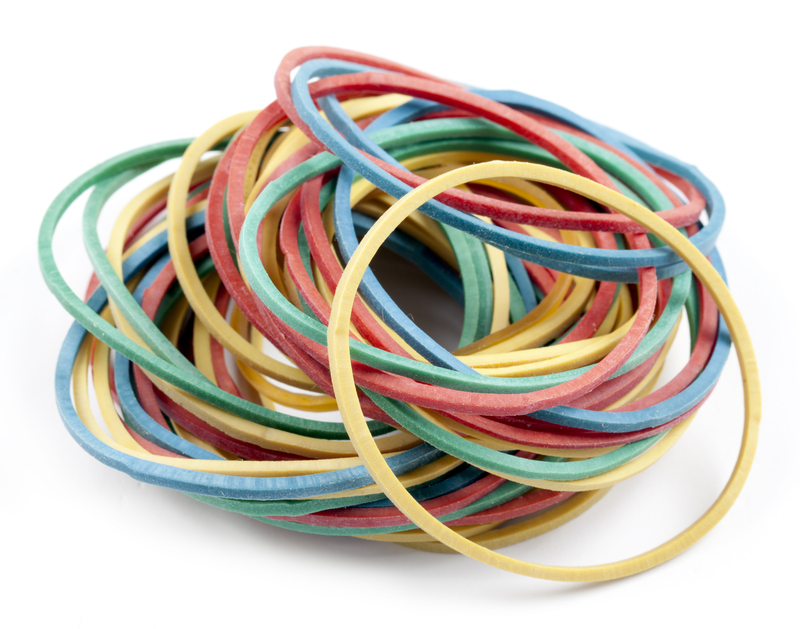Save More by Reusing and Recycling Bulky Waste Items
Are you looking to make a positive impact on the environment while saving money? Learning how to reuse and recycle bulky waste items is a great place to start. Not only can these practices help reduce landfill waste, but they can also help you uncover valuable resources and even generate income. In this guide, we'll explore innovative, practical, and easy ways to save more by effectively handling large waste materials--from old furniture to broken appliances.

Understanding Bulky Waste Items
What Are Bulky Waste Items?
Bulky waste items, also known as large or oversized waste, are objects that are too large to be collected by regular waste management services. Common examples include:
- Old furniture (sofas, beds, wardrobes, tables, chairs)
- Large kitchen appliances (refrigerators, ovens, washing machines)
- Mattresses and carpets
- Garden waste (large branches, old lawnmowers)
- Electronic waste (TVs, computers, large electronics)
- Building materials (doors, windows, bathtubs)
Every year, millions of tons of bulky waste end up in landfills worldwide. By reusing and recycling these large waste items, we can significantly reduce environmental impact and cut down disposal costs.
Why Reusing and Recycling Bulky Waste Matters
Cost Savings for Individuals and Communities
One of the most compelling reasons to reuse and recycle bulky waste is financial benefit. Here's how you can save:
- Avoid Disposal Fees: Many municipalities charge fees for bulky item collection. Repurposing or donating these items can help you avoid these costs.
- Make Money: Refurbishing or upcycling large items can generate revenue through sales, either via online marketplaces or local shops.
- Reduce Purchase Costs: Reusing materials for DIY projects prevents the need to buy brand-new products and raw materials.
Environmental Benefits
*Reducing bulky waste* has a direct positive effect on the environment:
- Lower landfill usage: Bulky items take up significant space; keeping them out of landfills preserves valuable land and reduces maintenance costs.
- Decreased greenhouse gas emissions: Manufacturing new products consumes energy and creates emissions. Reusing and recycling reduces this impact.
- Resource conservation: Many large items contain metals, plastics, and other resources that can be recycled and used again.
How to Reuse Bulky Waste Items
Creative Ways to Repurpose Large Items
Giving a second life to items like furniture, doors, or appliances is both environmentally responsible and potentially profitable. Here are some innovative strategies to reuse bulky waste:
- Furniture Restoration: Sanding, painting, or replacing hardware can turn outdated furniture into modern, functional pieces.
- Upcycling: Repurpose an old ladder as a bookshelf, or transform doors into a stylish headboard.
- Garden Projects: Use bathtubs or sinks as planters, or old pallets to create garden furniture.
- Donation: Donate gently used items to local charities, shelters, or community organizations in need.
- Sell or swap: Online platforms and community swap groups are excellent for passing on old, bulky items to new owners.
DIY Project Ideas to Repurpose Bulky Waste
Feeling creative? Many household items can be easily transformed with simple tools and materials. Here are a few ideas:
- Old drawers from dressers can become stylish wall shelves.
- Broken chairs can be turned into unique plant stands.
- Bed frames can be repurposed as garden trellises.
- Wooden pallets are ideal for creating coffee tables, benches, or vertical gardens.
Pro Tip: Before you start any reuse project, check for safety issues such as exposed nails, broken glass, or toxic paint. A little preparation goes a long way in making your DIY project enjoyable and successful!
Effective Bulky Waste Recycling Strategies
Sorting and Preparing Items for Recycling
To make recycling more efficient, it's crucial to sort and prepare bulky waste correctly. Here's what to consider:
- Disassemble where possible: Remove screws, nails, or separate materials (metal, plastic, wood) to simplify processing.
- Clean items: Remove food debris or hazardous substances to protect workers and ensure safe recycling.
- Remove non-recyclable parts: Items like foam fillings, rubber coatings, or glass sections may need special disposal.
Where to Recycle Bulky Waste Items
Not every local recycling center accepts large or unusual items. Here are some options for bulky waste disposal and recycling:
- Municipal bulk waste collection days: Many cities schedule special pickups for large items--check your local calendar.
- Dedicated drop-off centers: Some recycling centers accept appliances, metals, or furniture for proper processing.
- Electronic waste programs: TVs, computers, and other e-waste often require specialized recycling. Look for certified e-waste recyclers.
- Retailer take-back programs: Many retailers accept old appliances when you purchase new ones.
- Scrap yards: Metal-rich items can sometimes be sold or disposed of at scrap yards for a small profit.
Recycling Specific Bulky Items
Recycling Furniture
Wooden furniture can often be chopped up for mulch, animal bedding, or particleboard manufacturing. Metal furniture is melted down, while plastic furniture is shredded and reused in new goods.
Recycling Appliances
Large appliances, also known as white goods, commonly contain metals and electronic components that are valuable for recycling. Many municipalities have specific appliance recycling days or locations. Be sure to check if your item contains hazardous materials like refrigerants, as these need special handling.
Recycling Mattresses and Carpets
Mattresses are made of steel, foam, and fabric--all recyclable. Specialized schemes will take apart mattresses for these materials. Some carpet manufacturers accept old carpeting for recycling into new carpet or insulation.
Tips to Reduce Bulky Waste Generation
The best way to manage waste is to avoid it altogether! Here are proven tips to help you produce less bulky waste in your household or business:
- Buy quality, not quantity: Invest in durable, repairable items to extend their useful life.
- Opt for modular furniture: Modular pieces can be more easily updated or repaired, reducing replacement needs.
- Rent or borrow infrequently used items: Need a ladder or a large tool for a single project? Try rental shops or sharing networks before buying.
- Maintain and repair: Regularly cleaning and fixing appliances or furniture reduces the chance you'll need replacements.
- Plan purchases: Measure spaces and assess needs before buying large items to avoid unnecessary bulk waste.
How Technology is Improving Bulky Waste Management
Online Platforms Connecting Waste to New Owners
Digital platforms have made it easier to connect people with reusable bulky items. Sites like Freecycle, Facebook Marketplace, and local community boards allow you to list, swap, or donate large items--sometimes with pickup included!
Smart Scheduling and Pickups
Many cities now offer apps or websites for scheduling special bulky waste collections. Some even allow tracking of recyclable material, making it easier to understand how your efforts help the environment.
Common Myths About Bulky Waste Reuse and Recycling
- Myth 1 - Bulky waste can't be recycled: In fact, most large items can be recycled, with proper sorting and coordination with local centers.
- Myth 2 - It's not worth the effort: Reuse and recycling offer clear financial, environmental, and community benefits that far outweigh the time invested.
- Myth 3 - Only professionals should handle bulky waste: With safety in mind, many projects are beginner-friendly and require only basic tools and knowledge.
Community Initiatives Supporting Bulky Waste Recycling
Repair Cafes and Community Workshops
Across the globe, communities are coming together to host repair events and workshops. These settings help people fix, upcycle, or creatively reuse large items--sometimes at no cost. These activities also strengthen local bonds and encourage sustainable habits.
Donation Drives and Charity Pickups
Charities and non-profit organizations regularly accept donations of bulky items in good condition. Some even offer free pickups, making it convenient to donate rather than dump.
How to Plan a Bulky Waste Clean-out
- Take inventory: List all large items you no longer need, and sort them by potential for reuse, recycling, or disposal.
- Check local guidelines: Review your city's rules on bulk waste collection and recycling.
- Contact charities: See if local organizations accept donations of your items.
- Arrange for collection or drop-off: Set up pickup through city services, recycling centers, or charity organizations.
- Document your impact: Track how many items you've reused or recycled to inspire continued eco-friendly behavior.
Proactive planning makes the process smoother and ensures the maximum amount of large waste can be diverted from landfill.

Conclusion: Start Saving by Reusing and Recycling Bulky Waste Items Today!
Properly reusing and recycling bulky waste items isn't just an eco-friendly move--it's smart for your wallet and your community. By embracing creative repurposing, strategic recycling, and modern technology, we can all play a role in reducing oversized waste and conserving resources for future generations. Start with one item today, and you'll be surprised by the savings and satisfaction that follow!
Frequently Asked Questions
- Can old, damaged furniture be recycled?
Many recycling centers accept wooden, metal, and plastic furniture, even if damaged. Disassemble and separate materials before drop-off. - What should I do with broken appliances?
Contact your local e-waste program or recycling center. Never throw large appliances in the regular trash. - Is it safe to reuse all bulky waste items?
Always check for hazardous substances (e.g., asbestos in old building materials, refrigerants in appliances) before reusing. When in doubt, consult a professional. - Are there costs associated with municipal bulky waste recycling?
Some services are free, while others may charge a fee. Check with your city or local waste authority for current policies.
By prioritizing the reuse and recycling of bulky waste, you help create a cleaner world--and save more for yourself and your community.
